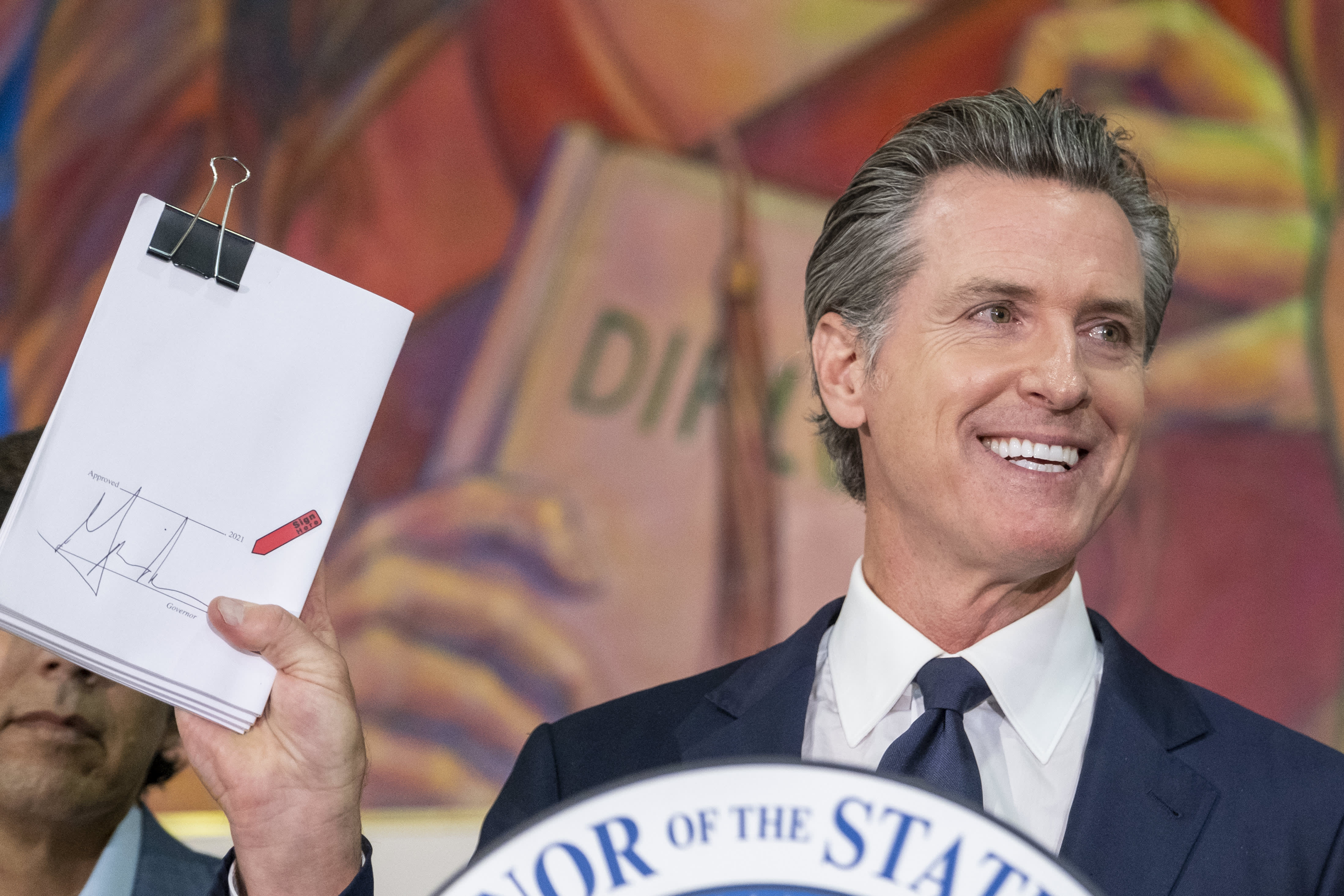California Governor Gavin Newsom presented a $286.4 billion budget proposal, dubbed the “California Blueprint,” for the state on Monday. The plan suggests spending $22.5 billion to address the burgeoning climate crisis in the state, allocating a fresh $6.1 billion to electric vehicle related initiatives.
Last year, the state of California committed to spending $15.1 billion on a range of climate-related efforts, including $3.9 billion to electric vehicle related initiatives. California also became the first state to say it would effectively ban sales of new, internal combustion engine or gas-powered vehicles by 2035.
Speaking about the amount it plans to spend on electric vehicle incentives, Newsom said, “You’d think we were announcing for the United States government.” Adding $6.1 billion in electric vehicle related spending to last year’s budget would amount to a “$10 billion dollar state, sub-national commitment,” he boasted.
The governor said such aggressive spending was justified, in part, to counter greenhouse gas emissions from vehicle tailpipes and fossil fuel extraction. The transportation sector is responsible for over 50% of the state’s greenhouse gas emissions.
Willingness to spend on electrification has drawn new zero-emission vehicle companies to the state, the governor said without naming those businesses. They include automakers like Rivian and Lordstown Motors, and charging infrastructure players like Volta and Ample, among others following in Tesla‘s footsteps.
Alluding to Tesla, Newsom said, “Even those that resided historically in the state are growing in the state.” Tesla moved its headquarters to Austin, Texas, last year but maintains a vehicle assembly plant in Fremont, and other significant operations in California.
Newsom also called California the “Saudi Arabia of lithium,” referring to deposits of the mineral in Imperial County near the Salton Sea.
Climate spending proposals in the California Blueprint for the 2022-2023 fiscal year include:
- $3.9 billion for the electrification of ports, heavy-duty trucks, school and public transit buses in the state.
- $2 billion for a grab bag of “clean energy” efforts including decarbonization of buildings, and long duration energy storage and offshore wind development.
- $1.2 billion in new spending on forest health and fire protection. This includes hiring and training more CalFire and other personnel, purchasing more Firehawks (helicopters used to fight fires), spending on home hardening, remote sensing, grazing, fuel breaks, prescribed burns and reforestation.
- $1.2 billion on 40,000 passenger electric vehicles and 100,000 new charging stations in California by the end of 2023 and $1 billion on other zero emission vehicle initiatives.
- $1 billion in tax credits for companies developing breakthrough climate-tech, or that make green energy technology and offer profit-sharing.
- $757 million for state parks and access to them for all Californians, regardless of income.
- $750 million on combating drought, to “prepare for the long-term realities of a world that’s being re-plumbed,” Newsom said. This includes spending on water conservation and efficiency, groundwater replenishment, and assistance to small farmers in the salad bowl state.
A KCBS reporter asked Newsom to comment on a solar policy plan from the California Public Utilities Commission that would cut solar incentives in the state, and add monthly grid-connection charges for solar customers, effectively making rooftop solar more expensive for California residents.
Newsom said he’d just seen that proposal and admitted “We still have a lot of work to do.” Tesla, which has a solar business, has asked its employees to lobby against that plan, CNBC previously reported.
In addition to the climate spending proposals, the California Blueprint also seeks billions for healthcare, housing and homelessness, public safety, education and small business support.
The governor said that California boasts a budget surplus over $45 billion. Some of that money will likely go back to taxpayers, and if an amendment to the state Constitution are approved, Newsom said, some of the surplus dollars could flow into the state’s reserves.
